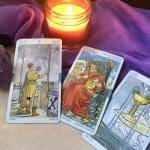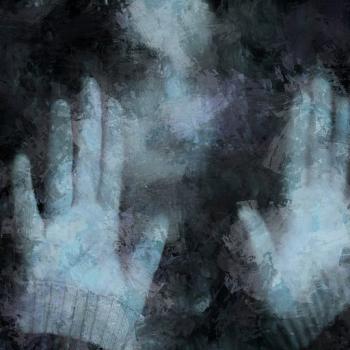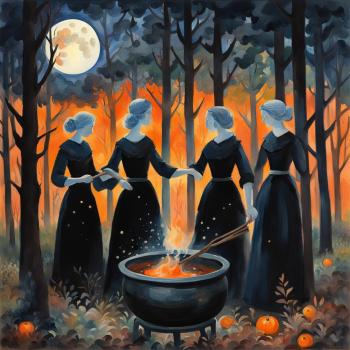I have spent a fair amount of time working with the elements: Earth, Water, Fire, & Air, plus Spirit and Void. In my experience, the elements are worlds away from the isolated energetic bastions of oppositional power which they are often portrayed as. On the contrary, I have found that each element, no matter how “pure” the conjuring or elemental, contains a seed of every other element. Rather than being isolated and oppositional, the elements are interdependent and interconnected in a balanced matrix, incapable of existing without each other.
If you have worked with the Chinese configuration of elements (Metal, Wood, Water, Air, and Fire), this concept probably sounds very familiar, but it is not an idea that is typically applied to the European-based model most commonly found in Western pagan and magical practice.
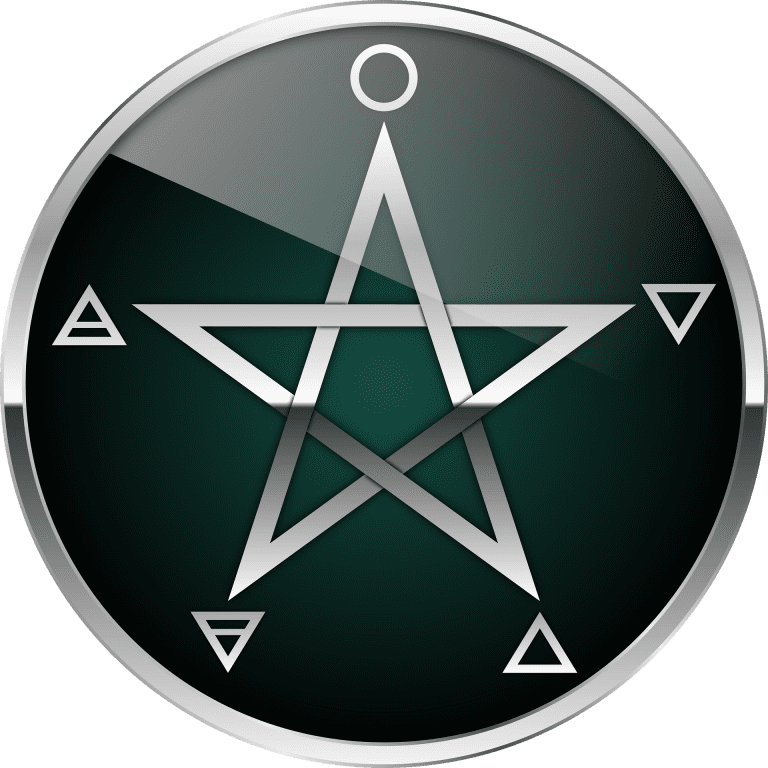
Interelementalism
Interelementalism is the cosmological viewpoint that the elements are intrinsically connected and interdependent, and through that interconnection we can work magic and celebrate the infinite diversity and interrelation of all existence.
In the physical world we can see the interdependence of the elements in the fact that anything exists. Atoms have electrons, protons, and neutrons (earth); move within themselves (water); vibrate and exchange energy (fire); and contain a lot of empty space (air). Our bodies contain earth stuff, but are mostly water, and are sustained by air and chemical reactions (fire). The blood of the earth, lava, is made of both fire and earth, but flows like water, and gives off gasses constantly. The sun is a ball of superheated gas which simultaneously is fire, earth, air, and water.
Even the water you put in your chalice for ritual, while predominantly expressing water, contains earth in its physical building blocks, contains air it has absorbed through its surface, and has fire in its chemical reactions (water is called the “universal solvent” for good reasons). Having a flame requires fuel, which can be solid (wood), liquid (oil or wax), or air (gas like propane or just plain air along with a solid or liquid fuel).
So, too, do the more ephemeral traits of each element overlap. Movement and action require a foundation upon which to act (earth), a means of acting (water), the drive to act (fire), and the impetus to act (air). This is true even with inanimate objects which don’t make conscious decisions the way we do as reasoning animals.
Take an avalanche for example. The snow and the mountainside are the foundation upon which the action can happen. The loss of balance on the mountainside is an expression of air. The crack at the start of the avalanche is fire, for it is the action that triggers irrevocable change. The flow of debris down the mountainside is water. The overall occurrence of the avalanche is most strongly related to water (flow down the path of least resistance), but the other elements are required as well, or it can’t happen.
Each of the elements still very much has its strongest domains of influence, but none of them exist in a vacuum, and they have a great deal of overlap in their traits. Very often, it is the flavor or nuances of the trait that lends it to one element or another.
As an example, we will return to the trait of movement. Air is movement that is dependent upon external forces, can be anywhere from very slow to mind-bogglingly fast, and requires concentration and skill to control, when it can be controlled at all. Fire is movement that is wildly transformative, because whether it is slow or fast, hot or cool, what is burned or changed is always irreversibly altered by the process. Water is movement that follows the path of least resistance, and resists opposition with tremendous efficiency. Earth is movement that is very slow and deliberate, or happens abruptly and powerfully with little to no warning, shaking the very foundations upon which things rest.
Passion is a trait that is usually associated with fire. Human passion burns, and creates a driving need to affect change, so it makes sense to call on fire most often when dealing with issues of passion. However, you can also find passion in the other elements. The passion of air tends to be fleeting, like a dream that seemed amazingly cool, but you can’t quite remember when you wake up. The passion of water tends to be very emotive, and willing to be worked on in its own time as circumstances best suit. The passion of earth tends to be very solid and stubborn, and content to just be.
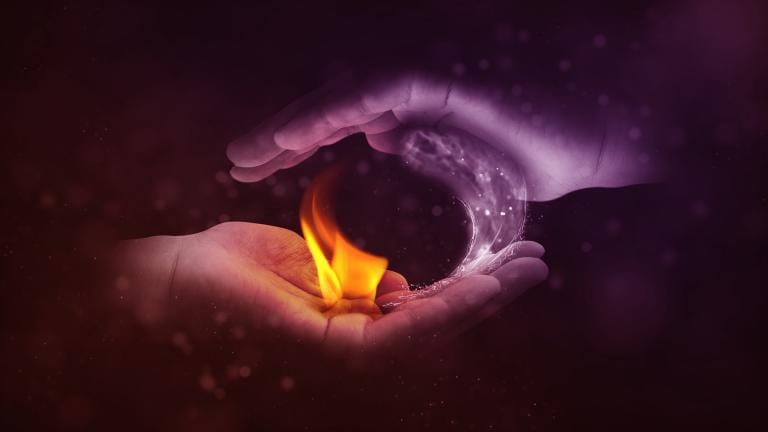
Balance is Not Opposition
Across all of existence, the elements are very balanced. That is, they have their strengths and weaknesses, and their greater and lesser areas of influence, which all complement each other to create the basic building blocks of this universe, both physical and metaphysical. Their borders are not hard and immutable (not even Earth), but instead diffuse and overlapping spheres of influence.
Since the elements all contain within them the seeds of the other elements, they are incapable of being truly oppositional. Pairings balance each other through their contrasting strengths and weaknesses, but it’s not a tug-o-war. They are not fighting. They are not at odds. Rather, they work together, all necessary components of this crazy thing we call existence, like acrobats balancing in four equal points on a disk which is supported only at its center.
When you reframe your perception to see the balance and interplay of the elements, it is possible to see that the appearance of opposition was nothing more than an illusion. The elements haven’t moved in relation to each other, but your ability to see how they relate to each other changes.
I couldn’t even begin to count how many times I have heard or read someone advise that you should never blow out a candle on your altar, because, as the reasoning goes, air is anathema to fire, and thus taints or diminishes the power of fire. Of course, if you believe that is what will happen, your belief will create that taint or diminishment, but it is not an immutable Fact. That kind of mutually assured destruction is not inherent to the interplay of the elements (that is the stuff of video games and RPG’s for the sake of balanced play mechanics).
When I blow out a candle, I usually see it as empowering the magic of the flame. My action of blowing gives the energy of my intent (an aspect of air) to the last of the flame, sending it on to do its work independently of whether or not I give it further focus or thought. Of course, depending upon what exactly you are trying to do magically, and whether or not you want to risk splattered wax, it might be better to snuff the flame. Both approaches are useful, and it is important to not wedge yourself into a rigid box, so you can adapt your magic to best suit your needs and current circumstances.
Correspondences and Traits are not Immutable
It’s worth mentioning that not every correspondence or trait attributed to an element is an immutable Truth. Sometimes they are little-t truths, or may not ring true at all in your personal practice, or mesh with your personal experiences. Seek your own understanding of the what and why and how of the traits and aspects of the elements.
Modern gender attributes are a gross oversimplification of deity associations over 2000 years old. I see all genders in all elements, and all elements in all genders (yes, even the nonbinary ones). For example, “Maleness” does not have a monopoly on Fire traits, and Fire traits are not universal to masculinity, so it makes little sense to say that Fire = Male. However, it does make a great deal of sense to recognize that Ares embodies a great many traits which are core to Fire (and vice versa), but that has more to do with his personality and metaphysical role than his gender.
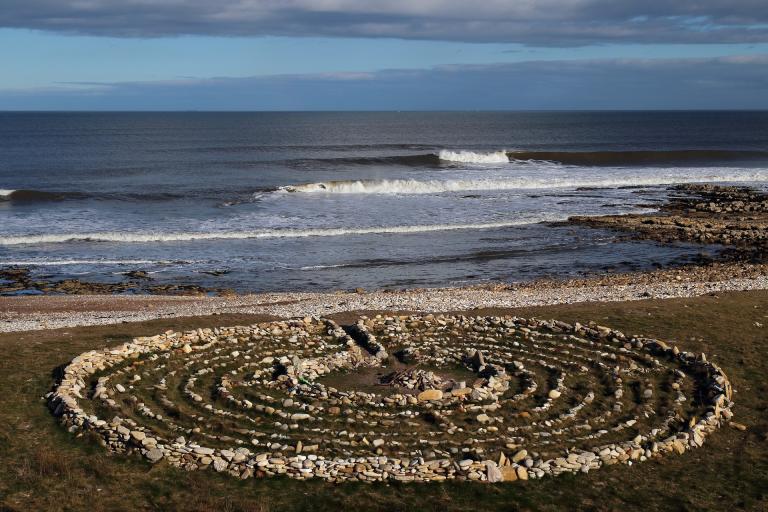
Element and direction correspondences are another weird one. When I was young, I tried very hard to memorize those correspondences, and to this day I can’t for the life of me remember what is supposed to go with what, or why. If it works for you, great! But it doesn’t work for everyone or every situation. I see all elements in all directions, so my brain simply refuses to go along with the idea of a hard correspondence between directions and elements. Instead, when I am setting a ritual I either don’t worry about directions, or I arrange the elements so they are oriented in a direction that makes sense for the surrounding environment, like putting water towards a lake or the ocean.
When you are restructuring your view of the elements to include their overlaps, it becomes necessary to reevaluate their correspondences and traits, with a particular eye on the nuances and flavors that resonate between the traits and particular elements. It’s far more complicated, but also far more detailed and accurate, and, I think, quite beautiful.
Reflecting on the Interconnected Nature of All Things
Allowing yourself to see and experience the interconnections and interrelations between the elements can provide a gateway to more easily viewing the interconnections and interrelations between all things. Nothing exists in a vacuum (other than, maybe, Void, but that is an article for a different day).
When we see the elements as the essential building blocks of all existence, and recognize that all elements exist to some degree in all things (even each other), then it naturally follows that all of existence is also interrelated and interconnected, at the very least through those elemental building blocks. We can go from macrocosm to microcosm, and back to macrocosm, and find that the threads of the elements are built into everything else, and those threads go everywhere, through all of time.
Even if you consider yourself a witch of a particular element, or even if your astrology chart is dominated by signs of a particular element, you have within you all elements There might be a particular element which comes most naturally to you, and is most easily understood, but the others are not outside your grasp. If you have a desire for balance, understanding how those other elements influence your life, even if one is dominant, can go a long way in helping you to achieve that balance in your life.

An Exercise
If you have an interest in better understanding the interconnected and interdependent nature of the elements, then I suggest grabbing a piece of paper and pen, and doing a meditation.
If it is not too much trouble, placing in front of you a representation of each of the elements can help with focus and clarity. I suggest using whatever tools or items you would normally use to represent the elements in ritual or on your altar, because you will already have strong associations with them.
Alternately, I suggest using a set of four clear glass tumblers or shot glasses. Fill one with water (water), fill one with dirt or stones (earth), put a candle in one and light it (fire), and leave the last empty or put lit incense in it (air). By using identical vessels, you can more easily ignore the vessels and more clearly observe the elemental representations contained within, especially air, since it is everpresent and invisible to the human eye.
Pick a single trait you associate with any of the elements (foundation, creativity, intelligence, etc.).
Make notes about what that trait means for the element(s) you normally associate it with. Include as much nuance as you can without getting bogged down in trying to list everything. You can always come back to it later, and there will always be something new to discover or realize.
Think about your focus trait as it relates to the other elements, especially how they each express that trait. Again, include as much nuance as you can without getting bogged down or frustrated. If you start getting frustrated, even if you haven’t jotted down anything, move on to another element. You can always come back to it later.
Think about the trait as it relates to your experiences in life. Pick one experience to examine in detail. How did the different elements all factor into that experience? Where can you see the dominant element, and where can you see the other elements? If you cannot see all the elements and find yourself getting frustrated, let it go. Realize that all elements are there, somewhere, and with time, as you grow to better understand how the elements interrelate, it may become clear.
Not all things are necessarily visible the first time you look at them, especially if the sight you are cultivating is counter to your foundational teachings. Simply by examining it, your subconscious will continue to work on the problem, and with time and future reflection, you may find that the answers hit your consciousness. Consciously changing your perspective and broadening your understanding is a skill which can be cultivated through practice.
Return to your notes periodically and see if you can add more insight on the traits you have explored in the past.




